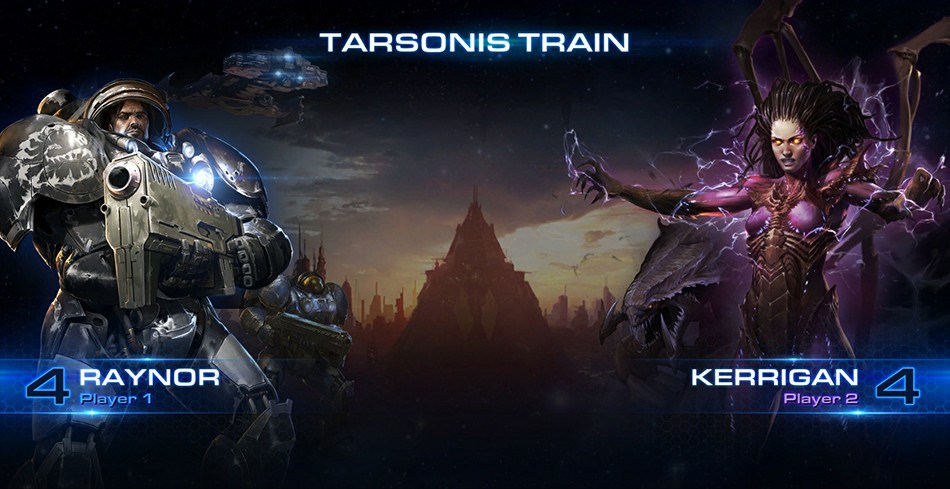
NPCs pulled from all three Starcraft II campaigns interact with you on each Co-Op Mission. As you begin, the NPC relates the map’s objectives plus victory and defeat conditions. These NPCs serve as a narrator of sorts, clearly communicating when to expect enemy waves and other pertinent information. It would have been very easy to leave the NPCs out of the Co-Op Missions, but they add lots of flavor and a sense that the missions connect to the overall Starcraft II story. This adds to the feeling that you are doing far more than just random “comp stomping” here. Co-Op Missions are a fantastic addition to the game.
The second cooperative mode supported in Starcraft II is Archon Mode. The name is quite thematic, coming from the Protoss Archon unit, which is formed when two Templar combine. In Archon mode, two players control one army. Both players can control units, make buildings, add the building queues, explore, or anything else you’d want to do in a Starcraft game. As you can imagine, communication with your archon mode partner is the key to success. Starcraft II can be a complex game, and splitting the load between two makes the game more accessible.
I must admit, I was very excited about Archon mode when it was announced, but it’s somewhat disappointing in practice. The biggest problem is that it’s just a vanilla comp stomping match against the AI. (You can play Archon mode against other players, but that’s not what we are reviewing here.) All of the bells and whistles of Co-Op Missions are missing here. There’s no real sense of advancement or narrative at all. Granted, the teamwork elements are very strong, but there’s not much to keep you coming back to Archon mode once you’ve experienced it; the novelty wears off quickly.

That’s not to say Archon mode is worthless. It can be a very valuable tool for players who want to play together but have a wide variance in skill level. It’s ideal for introducing a beginner, perhaps someone who has only played the campaign, to the steep learning curve of Starcraft II multiplayer. Similarly, Archon mode could be useful for a player who wants to learn about one specific aspect of the game from another. Say you want to learn good micro from a friend who is more highly ranked. Archon mode lets you practice doing just that. There’s definitely an important place in the overall Starcraft II experience for Archon mode, but it just doesn’t offer the replayability of Co-Op Missions.
One major oversight for both Co-Op Mission and Archon Mode is the two player limit. If you are wanting to team up with more than one other player, you are limited to vs. AI comp stomping matches. While I can understand the limit for Archon mode, there’s no good reason for limiting Co-Op Missions to two players. Clearly, the game engine can handle more, since you can do four player vs. AI matches easily. Even if there were only one or two Co-Op Missions supporting three or four players, that would have made a big difference.
In the end, the cooperative elements in Starcraft II: Legacy of the Void are a mixed bag. Co-Op Missions are a wonderful addition, full of long term replay value, but the two player limit is disappointing. Archon Mode is a nice distraction, but isn’t compelling enough to keep you coming back over and over. Clearly, the focus of Starcraft II is competitive multiplayer, and that remains as strong as ever. The single player campaigns are fantastic, too. It’s great to see some dedicated co-op elements in the game, but what we ended up with doesn’t have the same level of polish as the rest of the game. Starcraft II: Legacy of the Void is a fantastic game, for sure, but if you are looking for a strong cooperative experience for three or more players beyond random comp stomping, you’ll be disappointed.
Verdict
Co-Op Score
Overall
The Co-Op Experience: Co-Op Missions enables two players to work to complete objective-based missions together, while Archon Mode allows for two players to control one base and army at the same time.
Co-Optimus game reviews focus on the cooperative experience of a game, our final score graphic represents this experience along with an average score for the game overall. For an explanation of our scores please check our Review Score Explanation Guide.